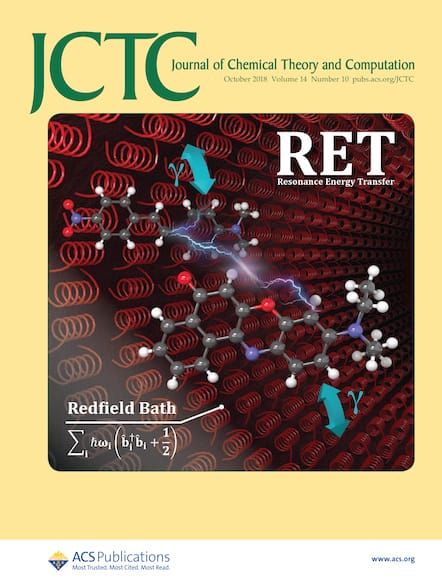TDDFT中g矩阵计算的状态-相互作用方法:基态激发态耦合和超一阶自旋轨道效应。
IF 5.7
1区 化学
Q2 CHEMISTRY, PHYSICAL
引用次数: 0
摘要
我们在时间相关密度泛函理论(TDDFT)和tam - dancoff近似(TDA)中引入了一种状态相互作用方法来计算g矩阵,这是第一次在这里应用。该方法通过明确地考虑自旋轨道耦合(SOC)和激发能,提供了对g位移的详细理解,从而可以分析不同的SOC阶数及其贡献。为了评估其准确性和可靠性,我们将状态交互TDDFT和TDA与广泛使用的单分量耦合摄动Kohn-Sham方法进行了比较。应用于各种系统,包括轻原子分子和重原子分子以及过渡金属配合物,表明两种方法在缺乏重元素的情况下产生相似的结果,而状态相互作用方法提供了对SOC效应及其对g位移影响的改进见解。本文章由计算机程序翻译,如有差异,请以英文原文为准。
State-Interaction Approach for g-Matrix Calculations in TDDFT: Ground-Excited State Couplings and beyond First-Order Spin-Orbit Effects.
We introduce a state-interaction approach for computing g-matrices within time-dependent density functional theory (TDDFT) and the Tamm-Dancoff approximation (TDA), applied here for the first time. This method provides a detailed understanding of g-shifts by explicitly accounting for spin-orbit couplings (SOC) and excitation energies, enabling the analysis of different SOC orders and their contributions. To evaluate its accuracy and reliability, we compare state-interaction TDDFT and TDA with the widely used one-component coupled-perturbed Kohn-Sham approach. Applications to a diverse set of systems, including light and heavy atom molecules as well as transition-metal complexes, demonstrate that both methods yield comparable results in the absence of heavy elements, while the state-interaction approach offers improved insights into SOC effects and their impact on g-shifts.
求助全文
通过发布文献求助,成功后即可免费获取论文全文。
去求助
来源期刊

Journal of Chemical Theory and Computation
化学-物理:原子、分子和化学物理
CiteScore
9.90
自引率
16.40%
发文量
568
审稿时长
1 months
期刊介绍:
The Journal of Chemical Theory and Computation invites new and original contributions with the understanding that, if accepted, they will not be published elsewhere. Papers reporting new theories, methodology, and/or important applications in quantum electronic structure, molecular dynamics, and statistical mechanics are appropriate for submission to this Journal. Specific topics include advances in or applications of ab initio quantum mechanics, density functional theory, design and properties of new materials, surface science, Monte Carlo simulations, solvation models, QM/MM calculations, biomolecular structure prediction, and molecular dynamics in the broadest sense including gas-phase dynamics, ab initio dynamics, biomolecular dynamics, and protein folding. The Journal does not consider papers that are straightforward applications of known methods including DFT and molecular dynamics. The Journal favors submissions that include advances in theory or methodology with applications to compelling problems.
 求助内容:
求助内容: 应助结果提醒方式:
应助结果提醒方式:


